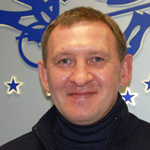Download presentation
Download article
It is nearly impossible now to identify a true origin of the statement: “Nothing is more practical than a good theory” repeatedly cited at different times by prominent scientists of various nations. If we substitute in this phrase “theory” with “model”, it will probably make more sense for those of us who prefer another citation: “The difference between “theory” and “practice” is that in theory there is no difference between theory and practice, but in practice, there is”.
The most evident result of the developments in usability over last 20 years is an introduction of numerous “style guides”, claiming to be industry, platform or global standards. Mostly, these are collections of artifacts and heuristic rules that are suggested as solution patterns for designing user interfaces. And, as often happens, the problem solution has become a problem in itself. The new problem is not merely a problem of choosing an “applicable standard” from the available manifold, but also a problem of its application. On the one hand, it turns out that standard solutions do not cover versatility of real-life tasks faced by software developers. On the other hand, they don’t suggest developers a solid base for making decisions in situations where deviating from a standard is reasonable and relevant.
In this presentation we are suggesting a model of usability understanding based on 6 dimensions: understandability, ease of use, efficiency, safety, responsiveness and aesthetics. We provide definitions of the dimensions and elaborate on methods of quantitative measuring of software quality along each of them. We also explain application of the model as a framework for analyzing and evaluating software quality, exploring opportunities of improving usability, classifying and segmenting end users.
Georgy Saveliev
Georgy Saveliev – software architect, enterprise modeling professional, cerified Business Analyst (CBAP). Senior Analyst at Auriga, Inc.
Georgy has over 20 years of experience in researching and designing human-computer interactions. Completed over 40 projects for improving enterprise information systems and business processes. Key contributor to creation of award-winning Enterprise Optimizer® software for River Logic®, Inc. Visionary, architect and project manager for building Enterprise Optimizer Server®. Architect, UI designer and project manager for building Cost-to-Serve Planner™ solution for Kraft® Canada.

 Русский
Русский  English
English 































Pingback: AURIGA’s experts to take part in CEE-SECR 2012 | Software Development News, Events, Thoughts from Auriga